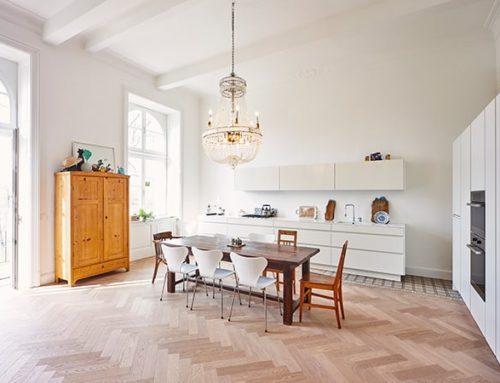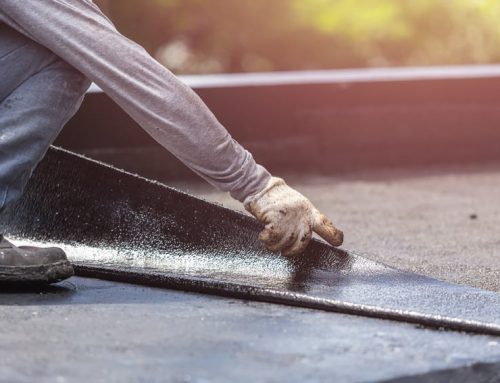If you’re planning on installing new flooring, it’s wise to consider how it will blend into the existing decor. Though it comes down to your personal preferences, you have to think about the practicality of the materials you’re about to choose. In your home, different areas serve different purposes and aren’t subject to the same foot traffic and use every day.
Flooring services offer myriad options, but wood, tiles, carpet, and vinyl are the four most common types. To help make things easier, we’ve put together a room-by-room guide to choosing the best flooring for your home.
Living room flooring installation
Before requesting flooring installation in your living room, reckon with your budget, maintenance level, and the desired comfort. Because your living room is a high-traffic area, you need something that can withstand daily foot traffic. In addition, since this is where you host most of your guests, it should be attractive.
If warmth and cosiness are your priorities, your ultimate choice should be a natural material like wood or carpet. Wood is warm and hardly goes out of style. With organic grain patterns, it offers a natural ambience and ages beautifully. It is hard-wearing and can be refinished if damaged.
Carpet floors come in a broad spectrum of hues, textures, and patterns. The soft underfoot can also be teamed with underfloor heating. Perhaps you’re low on budget but want something durable. Porcelain or ceramic tiles should be at the top of your bucket list.
Kitchen flooring installation
Spills and stains are the order of the day in the kitchen. As a result, you’ll need a durable and easy-to-clean flooring material for this busy area. The hardness of floor tiles, vinyl, and laminate makes them resistant to harsh indoor environments. They are water-resistant, splash-proof, and scratch-resistant. But you must mop spillage within a reasonable timeframe to maintain the pristine condition of your kitchen floor.
Laminate floors are cost-effective and are capable of handling pretty much anything you throw at them in the kitchen. Various styles and finishes are available for high-end laminate, which resembles wood or tile.
In terms of practicality and aesthetics, there’s no better option for the kitchen than tiling. More affordable than natural stone, porcelain tiles are hard-wearing, low maintenance, and require no sealing. They are arguably easier to lay due to their regular shape, which facilitates thin grout lines.
Vinyl is another durable and inexpensive option. It withstands water and is softer than tiles, making it a perfect flooring material for houses with younger kids. The vast range of colours and patterns presents an opportunity to experiment with interior décor.
Stay away from solid wood and natural carpet as they are not sturdy enough for a kitchen. Wood can expand and contract and is also susceptible to scratching. Standing water and hidden leaks cause wood to warp and split or rot over time.
Bedroom flooring installation
A bedroom should feel luxurious and calming. While a lot of value is placed on hardwood flooring throughout the house, it isn’t the most comfortable underfoot to walk on bare feet in the morning. Opt for a plush, soft carpet if you want a cosy vibe in the bedroom. A gorgeous silk-and-wool floor can give you the sumptuous treat you need in your most intimate room.
Natural carpet is eco-friendly and ideal for family members allergic to dyes and chemicals. Consider a thick pile carpet designed in a pattern or colour fitting within your style. If you have a hard floor already installed in your bedroom, use runners and rugs at the foot and on both sides of your bed.
The hallway flooring installation
As the entrance to your home, the hallway is one of the first impressions people have of your sense of style. You want to set the right tone by installing suitable flooring in the hallway. Keep in mind the heavy traffic in this area characterised by dirty feet, bags, and home deliveries. Spillages and stains are common, so you need a robust and easy-to-clean flooring material. Moreover, it should be affordable to replace if it gets damaged.
Artificial tiles are the best match for a hallway floor as they are low-maintenance and durable. Natural tiles also work well with underfloor heating and come in various designs. One of the stunning tiles for a dramatic hallway is marble, but you must reseal it regularly to remove marks and stains. A leathered or honed finish marble tile comes highly recommended as it is slip-resistant.
Bathroom flooring installation
Flooring in bathrooms should be able to handle high moisture levels. Wetness has detrimental effects on solid wood and natural carpet. Engineered floors are not good either in areas where splashes are common. Therefore, tiles, laminate, rubber, and vinyl are the most appropriate for bathrooms.
With their elegant finish, tiles can give your bathroom a unique style. You can choose a mosaic pattern or slab style. While ceramic tiles are less expensive than porcelain, they tend to crack easily.
Rubber and vinyl flooring are budget-friendly choices for bathroom floors. Go for the high-end version LVT (Luxury vinyl tile) that is available as tiles or planks. Thanks to its attractive wood effect, LVT can be used in areas where real timber doesn’t fit. It provides warm underfoot and comes in a broad array of styles. But you need to liaise with flooring services to achieve the best installation.
Stairway flooring installation
Staircases require stable and grippy floors to prevent accidents. You can lay carpet, laminate, or wood but steer clear of vinyl. Make sure the stairway design matches the hallway or the room the stairs lead to. Wood flooring looks elegant flowing from the hallway, but you should add stair runners to protect it from pounding footsteps.
Conservatories and basements flooring installation
Climatic fluctuations are common in conservatories. As such, wood floors cannot handle the changing humidity levels; hence, they are likely to expand, soften, or shrink. So, look for resilient materials like carpets, laminate, and vinyl, which are also excellent choices for the basement.
You can easily get carried away when browsing flooring materials online or in a showroom. You might even forget that your floors need to complement the rest of your furnishings. At Cooper & Williams, we help customers explore flooring properties that can make their houses cosier, energy-efficient, and stylish.
If you need to change your floor or want a new floor installation, call our specialists to see the options we have in store for you.




